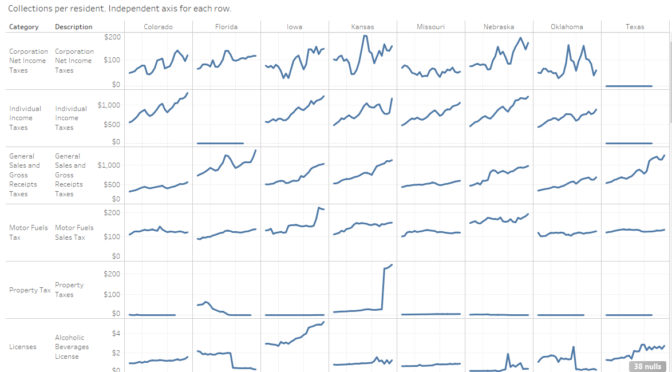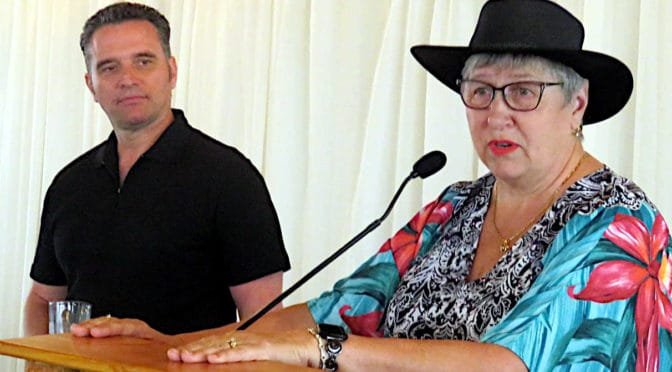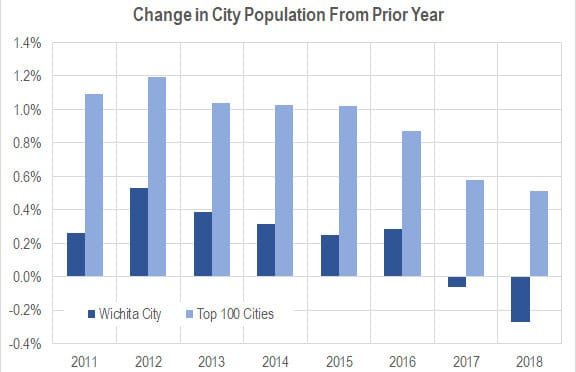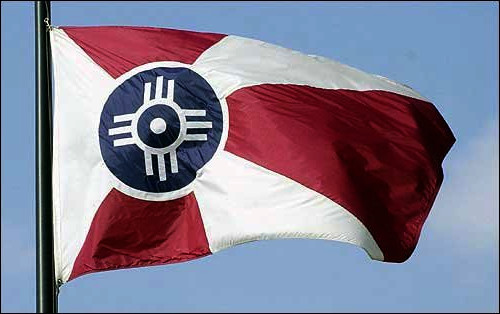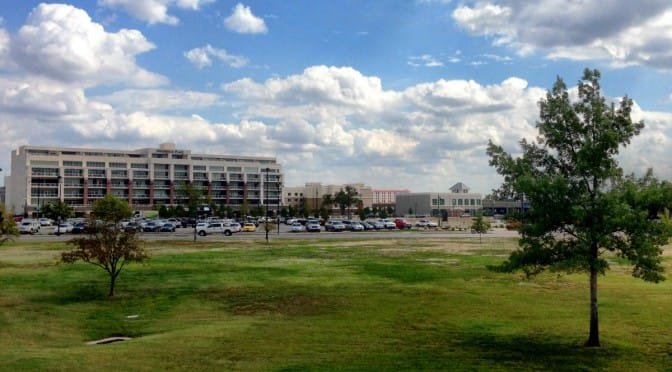A Wichita firm plans to move its offices to what was billed as the city’s premier entertainment district.
King of Freight, a Wichita freight brokerage firm, is planning to move its operations to the vacant Gander Mountain building in WaterWalk. This requires a modification to the lease of the land.
It’s important to recognize that King of Freight is not the tenant in the lease. The landlord is the City of Wichita. The tenant is WaterWalk LLC, a Kansas limited liability company, whose president is Jack P. DeBoer. The lease covers only the land, not the building. The city does not own the building. While the city rents the land to DeBoer, there is undoubtedly a deal between him and King of Freight. Details of that are unknown.
When WaterWalk was conceived, the goal was a destination of retail, entertainment, and residences, and some $41 million of tax money was spent. The original lease for the Gander Mountain ground reflected that. Now, that a non-retail firm will be using the ground, a change was needed.
The reason is that the original lease included a provision for “additional annual rent.” If the business — Gander Mountain — exceeded certain financial parameters, the city could collect additional rent. The additional rent clause was never triggered. Other WaterWalk deals with similar provisions have never paid additional rent, either. )
The new lease abolishes the additional rent provision, although it could be reinstated if employment goals are not met. Since the additional rent clause is toothless, so there is no real penalty.
The tenant will continue to pay the city $1 per year in rent. King of Freight will pay $15 per month to use city parking spaces. This is perhaps half the market rate for long-term parking arrangements.
Is the move of King of Freight a good deal for the city and its citizens? King of Freight anticipates adding jobs in the future, and the new lease with the city requires certain job goals to be met. But immediately, the effect is simply moving employees from one downtown office to another. When King of Freight occupies new space, empty space will be left behind.
While putting the Gander Mountain building to use is good, its use as office space moves away from the original concept for WaterWalk, once touted as “Wichita’s Next Great Gathering Place.”
Will retail and entertainment establishments wish to locate near an office building? They didn’t want to locate in WaterWalk anyway, so maybe there is no change.
Of interest is DeBoer’s confession of being “confounded” by WaterWalk, recently telling the Wichita Eagle, “It’s a business I don’t know anything about.”
Before that, he told the Eagle that whatever becomes of the Gander Mountain building, it will be “something fun and good for the city.”
I don’t think that goal has been realized.
Of note: DeBoer told the Eagle he’s had opportunities to “do a restaurant or something,” but he declined. Former Wichita Mayor Carl Brewer, in State of the City addresses, promised specific named restaurants would be opening in WaterWalk.
In more detail
Excerpts from the city’s agenda packet for this item:
“The lease’s current rent requirement, which was drafted for a retail use, would be suspended if the job requirement is met, and would terminate in 10 years if KOF and its entities maintains the presence of 400 net new jobs in Wichita through the 10-year period.”
“KOF has also agreed to pay for parking spaces at an initial rate of $15/month per space. Revenue from KOF’s employee parking is estimated at approximately $70,000/year.”
From the lease agreement: “Section 5.01. Minimum Rent. As of the date first written above, Tenant has paid Landlord a minimum fixed annual rent (“Minimum Rent”) of One Dollar ($1) in one (1) installment covering the Term of this Lease as defined in Article I above.”
“Section 5.02. Additional Rent. The Tenant will also pay, without notice, and without abatement, deduction, or setoff, except as otherwise specifically allowed herein, as additional rent, all sums, taxes, assessments, costs, expenses, and other payments which the Tenant in any of the provisions of this Lease assumes or agrees to pay, and, in the event of any nonpayment thereof, the Landlord shall have (in addition to all other rights and remedies) all the rights and remedies provided herein or by law in the case of nonpayment of rent.”
This section then describes the mechanism of calculating “Additional Annual Rent.” This mechanism was crafted for a retail store so that if “Adjusted Net Cash Flow” was ever positive, the city would be paid 25 percent of that. But the activity of the retail store, Gander Mountain, never triggered the payment of additional rent.
The section goes on to modify the additional rent provision for uses other than retail, like an office: “No Additional Retail Rent and no Additional Rent involving any payment of any portion of the Adjusted Net Cash Flow shall be owed for any use of the Premises that is not a Retail Use under codes 4400 through 454390 of the 2017 NAICS.”
The property will be paying property taxes: “Section 6.01. Taxes. Tenant shall pay as additional rent during the Term and any extensions thereof, all ad valorem taxes, and all other governmental taxes or charges that may be levied against the Premises.”
Since the property is within a tax increment financing (TIF) district, the taxes flow to that, not to fund the general operations of government.
“Section 9.03. Parking. The parties agree that Tenant’s employees will have nonexclusive access to the 430-space Parking Garage and the 60 spaces of surface parking under U.S. 400 (“Kellogg”) for an initial rate of $15/month per employee for parking between the hours of 8:00 a.m. – 6:00 p.m., Mondays-Fridays. Tenant shall be responsible for providing a monthly report of the number of employees who are parking in Parking Garage and on surface parking lot under Kellogg, and shall remit $15.00 per employee on a monthly basis. At each one-year anniversary of this agreement, the parking rate shall increase 3%.”
“Section 16.06. Assignment; Sublease. Tenant may freely assign or sublease all or any portion of the Premises without Landlord’s consent.”
—
Notes


